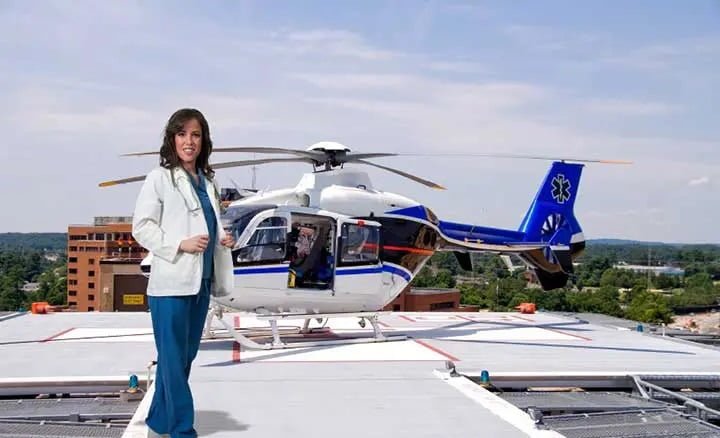RN flight nurses are unsung heroes who combine medical expertise with aviation skills to save lives in emergencies. This blog explores their crucial role in air ambulances, the journey to becoming one, and the future of this critical profession.
The Path to Becoming an RN Flight Nurse
Educational Requirements and Certifications
Becoming an RN flight nurse requires a strong educational foundation. Typically, aspiring flight nurses start with a Bachelor of Science in Nursing (BSN) degree, followed by obtaining their Registered Nurse (RN) license. However, the journey does not end there. Specialized certifications such as Certified Flight Registered Nurse (CFRN) and Emergency Medical Technician (EMT) are often required. These credentials ensure that flight nurses are prepared for the unique challenges of air medical services.
Necessary Skills and Experience
Beyond formal education and certifications, flight nurses need a combination of skills and experience. Critical thinking and the ability to perform under pressure are paramount. Many RN flight nurses have backgrounds in emergency or intensive care unit (ICU) nursing, where they develop the skills necessary for high-stakes situations. Additionally, physical fitness and resilience are crucial, given the demanding nature of the job.
A Day in the Life of an RN Flight Nurse
Overview of Daily Responsibilities
The daily responsibilities of an RN flight nurse, including providing medical escort service, are as varied as they are demanding. From pre-flight preparations to in-flight medical care, these nurses are responsible for ensuring the safety and well-being of their patients. Before each flight, they conduct thorough equipment checks and review patient information. During the flight, they monitor vital signs, administer medications, and provide life-saving interventions as needed.
Challenges and Rewards
The job of an RN flight nurse is not without its challenges. They often work in unpredictable environments, facing extreme weather conditions and high-pressure situations. However, the rewards are equally significant. Knowing that they are making a tangible difference in saving lives provides immense job satisfaction. The camaraderie among the flight crew also adds a sense of belonging and teamwork.
Equipment and Technology
Overview of Specialized Equipment Used in Air Ambulances
Air ambulances are equipped with state-of-the-art medical equipment designed for in-flight use. Ventilators, defibrillators, and portable monitors are just a few examples of the tools at an RN flight nurse’s disposal. These specialized devices are essential for providing high-quality care in the confined space of an aircraft.
Role of Technology in Enhancing Patient Care
Technology plays a pivotal role in enhancing patient care in air ambulances. Advanced communication systems allow flight nurses to consult with medical experts on the ground, ensuring that patients receive the best possible care. Additionally, real-time data transmission enables hospitals to prepare for the patient’s arrival, further improving outcomes.
Training and Continuing Education
Importance of Ongoing Training for RN Flight Nurses
The field of air medical services is continually evolving, making ongoing training essential for RN flight nurses. Regular training sessions ensure that they stay updated on the latest medical protocols and aviation safety standards. Many programs offer simulation-based training, allowing nurses to practice their skills in a controlled environment.
Overview of Available Educational Resources
There are numerous educational resources available for RN flight nurses. Organizations such as the Air & Surface Transport Nurses Association (ASTNA) offer workshops, webinars, and certification programs. Additionally, many employers provide opportunities for continuing education, recognizing the importance of keeping their staff well-trained.
The Future of Air Ambulance Services
Innovations in the Field
The future of air ambulance services looks promising, with several innovations on the horizon. Drones are being explored as a means of delivering medical supplies to remote locations quickly. Additionally, advancements in telemedicine could allow flight nurses to consult with specialists in real-time, improving patient care during flights.
Challenges and Opportunities
Despite the advancements, there are challenges to be addressed. Regulatory hurdles and the high cost of air ambulance services remain significant barriers. However, increased awareness and support from the public could lead to more funding and better regulations, making these services more accessible to those in need.
Conclusion
Now that you know more about the vital role of RN flight nurses, we hope you will join us in recognizing and appreciating their efforts. These sky heroes truly embody the heart of healthcare, combining compassion, expertise, and bravery to save lives in emergencies.
Read more : Qxefv: The Tech World’s New Enigma in 2024



